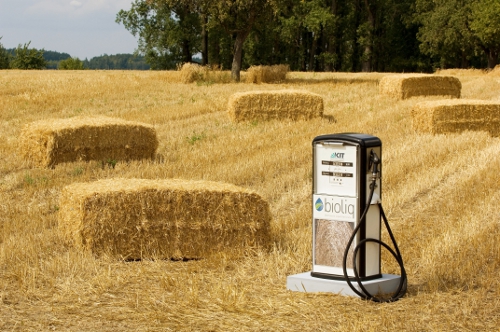2nd-Generation Biofuels as a Contribution to the Energy Mix
Synthetic fuels from biomass have a great potential: In the short run, they will replace part of our fossil energy sources and will contribute to an efficient mix of renewable energies. Covering a wide range of different fuels such as kerosene, diesel, and gasoline, BtL (Biomass-to-Liquid) fuels of the second generation offer various advantages. Almost any kind of vegetable biomass material whose origin and needs do not collide with those of plants grown for the food and feed industry can be used for biofuel production. Dry, lignocellulosic residual biomass (Straw, residual wood) from agricultural, forestry, and landscaping is particularly suited. The synthetic fuels produced are fully compatible to the already existing, conventional fuels and can be used as a drop-in, but also as stand-alone products. The quality of the high performance fuels or fuel components should improve the combustion properties and emissions significantly. BtL biofuels of the second generation are capable of reducing carbon dioxide, as requested by the European Commission. The 60% goal can easily achieved by BtL fuel production, because heat and electrical power are important by-products of the BtL biomass conversion process, providing most of the energy demanded for the production process.

© EU
Advantages of BtL Fuels over Conventional Fuels
- Reduction of carbon dioxide emissions
- Saving fossil fuels
- Independence of energy imports to some extent
- Strengthening of regional agriculture
- Wide range of raw materials, i. e. high mass potential
- No competition for land with food production
- Infrastructures: Filling stations and routes of distribution can continue to be used
- Fuels ("Designer fuels") can be tailored to the needs of different types of engines
- Covering of a large variety of fuel types

© KIT 2025

